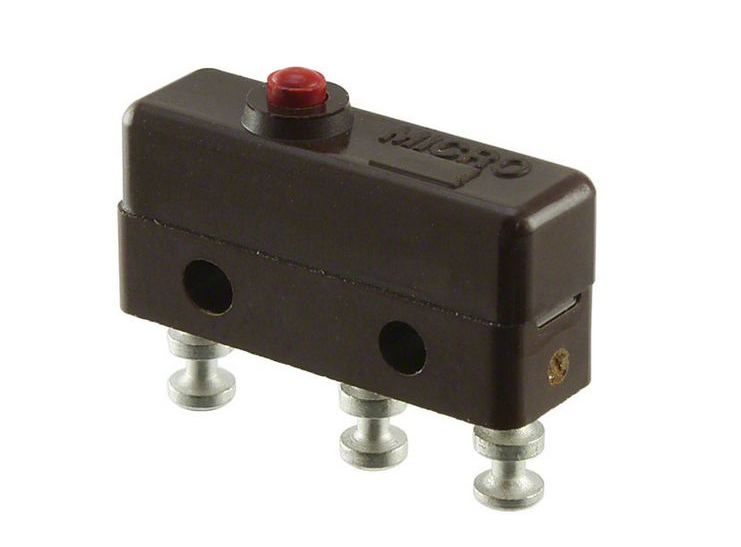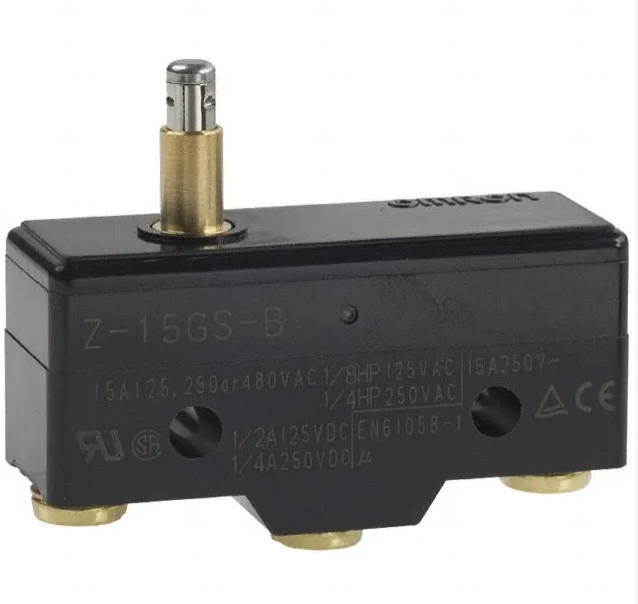Everything you should know about Micro Switch
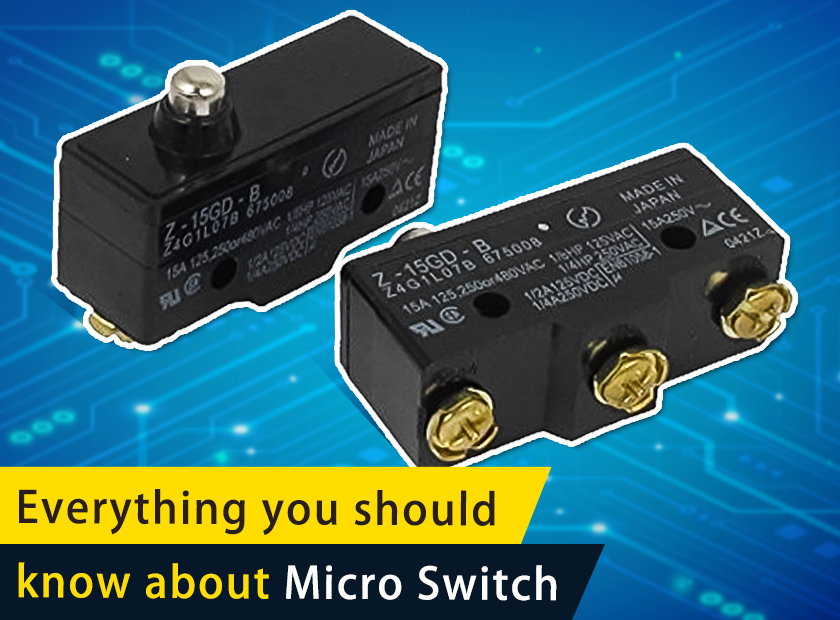
Everything you should know about Micro Switch
What Is a Micro Switch?
The micro-switch is a switch that operates rapidly with a very small amount of force. The micro-switch is also called a miniature snap-action switch. It is extremely reliable, fast, and efficient to operate, and is also known as a miniature snap-action switch. It is impossible to create smart appliances without micro switches. They are used in many modern-day smart applications. Microswitches are often used as safety devices because of their reliability and sensitivity. They are used to prevent the closing of doors when something or someone is in the way and other similar applications.
The micro switch has three pins: Common (C), Normally Closing (NC), and Normally Opening (NO). Here, the Common pin is an input pin, the NC pin is Output 1, and the NO pin is Output 2.
With its tiny contact gap, The micro switch is a snap-action precision switch for logic-level and power-duty loads. The switch has options like SPDT, SPNO, or SPNC, and offers power-duty switching through silver alloy contacts. Different electrical terminations are available, and logic-level control can be achieved by silver alloy or gold-plated contacts.
How Does a Micro Switch Work?
A micro switch is equipped with an actuator that lifts a lever when pressed to move the contacts into the proper position when depressed. When pressed, micro switches often make a “clicking” sound. Often, micro switches have mounting holes so they can be quickly mounted and secured into place. Due to their long life, they rarely need to be replaced and require little maintenance since they are such a simple switch.
The working principle of a micro switch is that when it touches an object, the contacts change position. Thus, the principle of operation of this switch is mainly as follows.
The normally closed pin of the circuit is opened and the normally open pin is closed when you press the lever of the switch. In the same way, when you open the lever of the switch, then the normally closed or NC pin of the circuit will carry the current, while the normally open or NO pin of the circuit can isolate electrically.
The tipping point mechanism is also the basic feature of the micro switch. So, this feature will help to generate certain tripping points and reset points wherever the contacts will change the state.
Micro Switch Circuit
Following is the circuit diagram for the micro switch. The circuit shown below uses a micro switch to control two LEDs with a battery. The micro switch has three terminals, which are C, NO, and NC. This circuit can be connected in the same way as the circuit shown below.
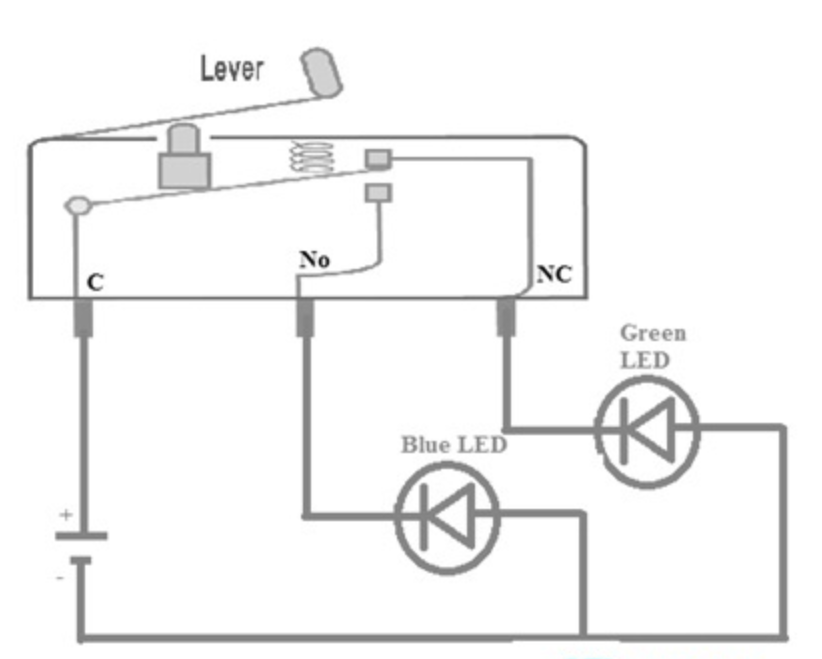
There is no connection between the NO terminal and the common terminal of the switch when the lever is pressed. Therefore, the Green color will turn on once the lever is pressed.
After the lever has been raised, the common terminal and the NC terminal of the switch will be connected, so the NC terminal of the switch will not be connected, consequently the Blue color LED will turn on. Based on the application, we can use the switch in NO or NC mode.
How is a Micro Switch constructed?
In order to construct a micro switch, many different components are required, including a plunger or actuator, cover, moving piece, support, NC terminal, NO terminal, contact, and, moving arm.
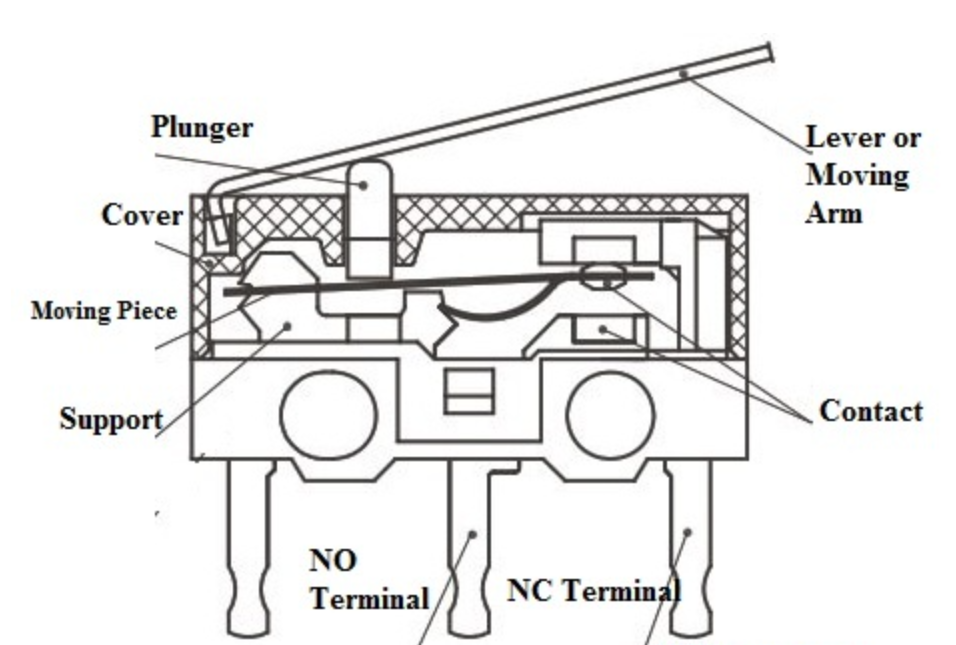
Plunger
Also known as an actuator, the plunger is a type of mechanical component used to manually control a circuit by turning it on/off.
Cover
The cover of the switch is for protection against external forces.
Moving Piece
The moving part that applies the operating force to the contacts is called the actuator.
Support
This is used to help hold the micro switch in place.
NO Terminal
NO terminals, which are also referred to as normally open terminals, indicate that the switch's contacts will be open by default, thus no current will flow through the circuit if you connect them.
NC Terminal
Known as a Normally Closed terminal, the NC terminal, as the name implies, performs the opposite function of the NO terminal. The contacts are closed, allowing current to flow through the circuit.
Contact
The switch contact is a piece of conductive material, usually metal. Establishing or breaking electrical continuity is the primary function of this component.
Moving Arm
The moveable arm is a lever in a switch that is used for activation and operation of the micro switch.
Different Types of Micro Switches
In micro switches, we can choose the type of lever terminals based on the application. Pin Plungers, Hinge Roller Lever, Rotating Operation, Short Straight Levers, Standard Straight Levers, Long Straight Levers, Extended Straight Levers, Small Simulated Roller Levers, Standard Simulated Roller Levers, Roller Levers, and L-Shaped Levers are some of the lever terminals available. We’ll discuss some types of micro switches in the below.
Rotating Operation Micro Switch
The rotation operation micro switches are commonly used with low torque actuators. Therefore, this type of switch can be used to detect light objects such as paper currency.
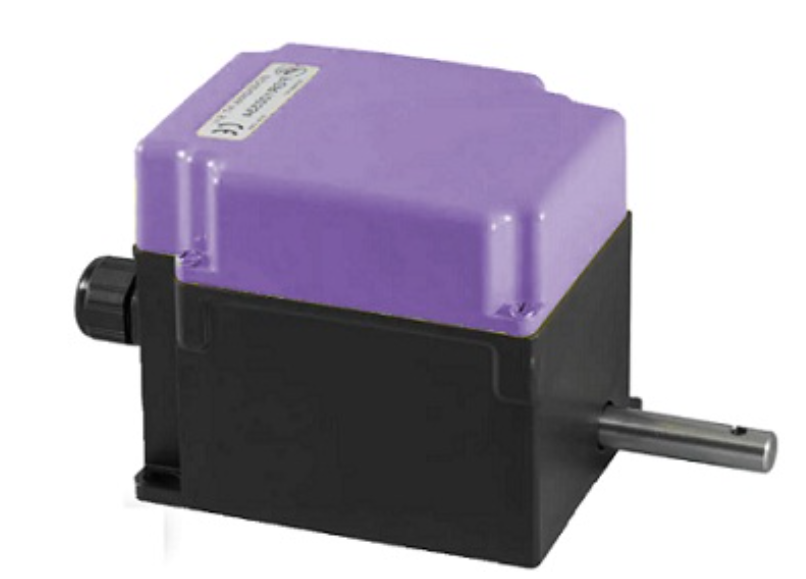
Pin Plunger Micro Switch
Pin plunger micro switches are suitable for direct, short strokes, hence allowing for the detection of high-precision positions directly. Additionally, since their overtravel is the shortest, they also require consistent stoppers.
Spring Pin Plunger Micro Switch
A spring plunger micro switch has a longer overtravel than a pin plunger. However, you can use this switch for similar applications. When using this switch, make sure the load is centered on the plunger due to the slightly larger plunger diameter.
Hinge Roller Lever Micro Switch
A hinge roller lever micro switch usually has a roller connected to the lever. This makes the switch suitable for high-speed camera operation.
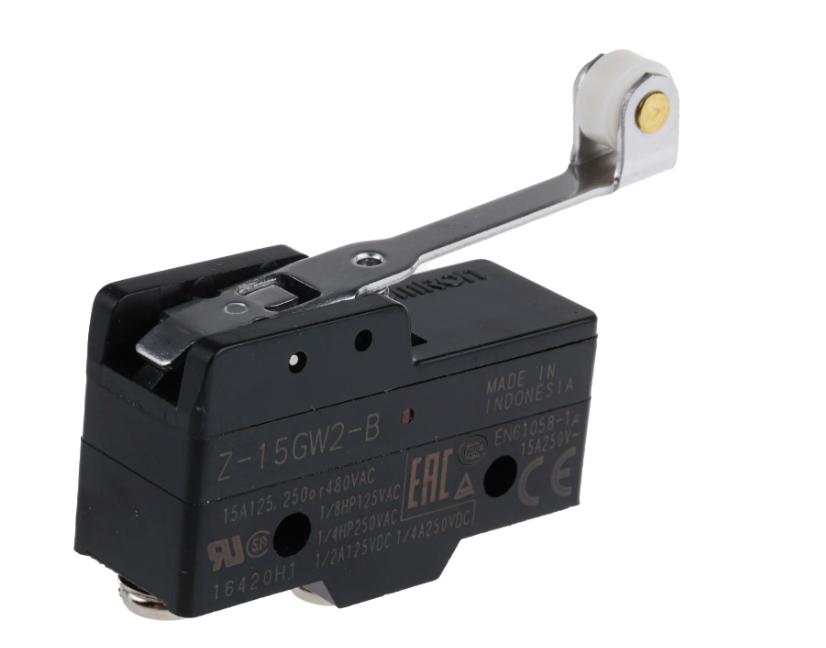
Leaf Spring Micro Switch
The leaf spring micro switch has a greater stroke because it is powered by a strong leaf spring. Therefore, you can use it for cams or cylinder drives at a low speed. To prevent damage and because the leaf spring has a permanent bearing point, it is essential to keep the overtravel switch in a specified application.
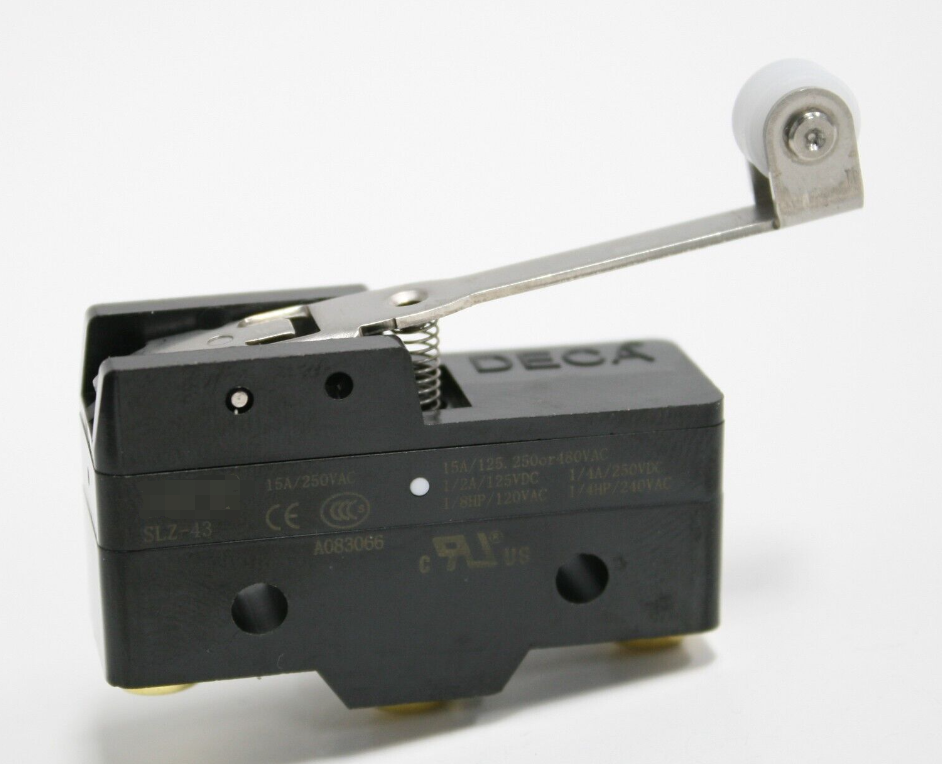
Panel Mount Plunger Micro Switch
This micro switch has the largest overtravel compared to other types of switches. This switch can be mounted on a panel by using a nut and a hex nut. After that, you can operate this switch either by hand or by mechanical means. Furthermore, this switch can be used with a slow-speed cam.
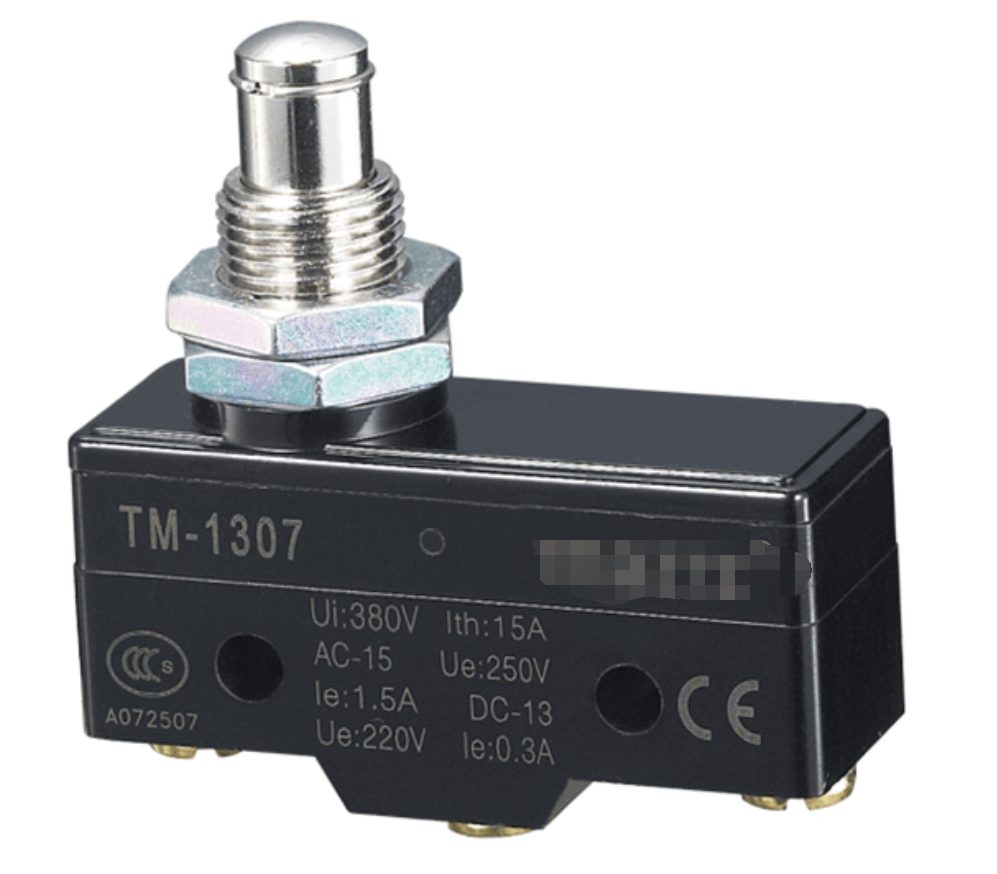
The differences between Micro Switch and Limit Switch
|
Micro Switch |
Limit Switch |
|
Small & Sensitive |
electromechanical device |
|
AKA: miniature snap-action switch. |
AKA: the end switch or position switch. |
|
Acts as a switch to turn an electrical circuit on or off, or to close a circuit automatically in response to a mechanical load. |
Functions to sense the object’s presence or absence. |
|
A micro switch consists of two limit switches, such as NO and NC, that operate in conjunction with each other & share a common terminal. |
The limit switch can be actuated by object presence or machine part motion. |
|
The types of micro switches include: plunger, spring plunger, short spring, panel mount, leaf spring, leaf lever, roller leaf spring, and so on. |
The types of limit switches are whisker, roller, lever limit, and plunger. |
|
It has less contact gap. |
It has a high contact gap when compared with a micro switch. |
How To Maintain a Micro Switch
Maintaining a micro switch is essential to ensure its longevity and reliable operation. Here are some steps you can follow to properly maintain a micro switch:
1. Keep it clean: micro switches are sensitive to dust and debris, so they must be kept clean. It is recommended that you use a dry cloth to wipe the surface of the switch periodically. Avoid using chemical cleaning fluids such as water solutions as they may damage the switch.
2. Avoid harsh environments: micro switches should not be used in environments with explosive or flammable gases. These environments can cause damage to the micro switch and compromise its safety.
3. Inspect Contact Parts: The touch parts of the micro switch must be inspected frequently to ensure proper operation. Check that the touch of the switch is okay, that the limit distance is within the range, and that the force and speed of touch are normal.
4. Monitor voltage and current: The current and voltage can have a significant effect on the switch, so it's important to check the circuit's voltage and current at regular intervals. Make sure the voltage stability is maintained to avoid damage to the switch.
5. Periodic maintenance: In automation equipment, micro switches must be periodically checked every 2 to 3 months to observe any damage to the external power supply. This maintenance can help avoid other consequences that may result from a damaged switch.
By following these steps, you can maintain a micro switch and ensure its reliable operation. Remember that regular maintenance is essential to keep the switch functioning properly and to avoid potential damage or safety hazards.
Advantages & Disadvantages of micro switches
Advantages:
Micro switches usually have accurate performance. They are of reliable switching and inexpensive, requiring less maintenance nad can last a long life. Those switches are versatile, often resistant to water and dust, and its arcing damage can be reduced by arcing fast switching speeds.
Disadvantages:
There are some problems like low-quality parts or bad components in most of these switches. Component burns, depreciation, and sudden failure are some of the failures that can affect a Micro switch.
Micro Swicth Applications
Micro switches are versatile electronic components used in a wide variety of devices. They are often used to create timing mechanisms when combined with other devices. Micro switches are an integral part of our daily lives and can be found in home appliances, automobiles, industrial equipment, and more.
They can also be used as control switches and limit switches, used in printers to detect paper jams, and in control circuits of various devices such as small motors, lamps, and solenoids.
In addition, micro switches are used in vending machines, where they act as jam detectors and can detect coins as they are inserted into the machine. They are also important electronic components for detecting the open/closed position of valves, as safety devices in elevators, and as door interlocks in microwaves.
Micro switches play a critical role in the proper functioning of many devices, from household appliances to industrial equipment. Their versatility and reliability make them an essential component in many electronic applications.
Final Words
If you're working on a project that requires the use of micro switches, you may be considering sourcing them. Elecrow is a leading supplier of electronic components and offers component-sourcing services for various applications.
In addition to micro switches, Elecrow offers other electronic component sourcing services such as sensors, LEDs, and more. Elecrow has a user-friendly website that makes it easy to find the components you need, and they offer fast shipping to customers around the world.
Overall, if you're looking for high-quality microswitches or other electronic components, Elecrow is worth considering. With their wide selection of products and excellent customer service, Elecrow can help you find the right components for your project and ensure that you get them quickly and at a competitive price.
Also, if you are a DIY electronics enthusiast who is keenly focused on creating projects and wants to turn your ideas into reality, Elecrow offers Partner Seller Program to help you realize your ideas, Via Partner Seller Program you can produce your own electronic products, and sell them online for commercial purposes.
Join Elecrow's Partner Seller Program to earn your benefits!
_____________________________________________________________
Btw, Raspberry Pi boards are popular and versatile tools for makers. The latest addition to the lineup, Raspberry Pi 5, is the most powerful version yet. Why not upgrade your projects with this cutting-edge device? Join our Giveaway campaign for Elecrow fans to win a brand new Raspberry Pi 5. Don't miss out! Good luck!
Elecrow Monthly RaspberryPi 5 Giveaway

